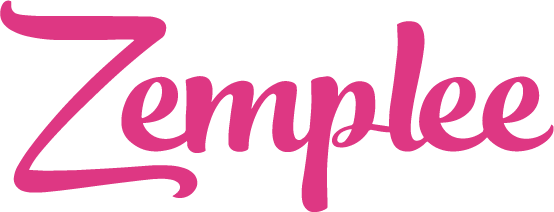
In our previous blog posts, we covered the topics on implementing technology solutions for an elderly care facility such as nursing homes, guidelines for doing comprehensive needs assessment and some helpful resources on staying abreast of new technology developments
In this blog we will
outline the different methods of doing systematic research on any technology or
product to assess its fit for an elderly care facility.
Thanks to Google,
today, researching on any idea, topic, product or technology is a zap. With a
careful selection of keywords and a click, information about any product or
technology is available in a fraction of a second. Gone are the days, when
one had to visit public libraries, read trade magazines to discover and learn
more about any product or technology. However, the challenge with Google or any
other internet search engine for that matter, is the daunting task of sifting
through hundreds of information records and links to find the right
product.
When it comes to
elderly care, the problem is exacerbated. Technology for elderly care is often
classified under healthcare – which means, having to pore over hundreds and
thousands of healthcare products, which are not necessarily meant for elderly
care or meet the intrinsic needs of elderly care. Searching for
“technology for aging” for example, often shows results that are
classified under “Aging Tech”, “Silver Tech”, or “Gerontechnology” – an
emerging set of terms that aim to sub-classify technology and products under
the broader all-encompassing healthcare category.
Often vendors that purport to display technology for eldercare do not job of distinguishing consumer products versus enterprise products – leaving it the researcher’s best guess to discover products that truly meet the needs for an elderly care facility. With so many products, technologies and platforms to choose from the challenge is to narrow it down to finding a solution that works and meets the needs.
First and foremost, any technology for elderly care has to factor in the special needs for the elderly. Everything from form factor, ease of use, usability and most importantly, the “care-ability” aspects of the product or solution has to be right. There are numerous guidelines to follow and certifications for eligibility verification. A select number of guidelines including FDA and ADA guidelines may be used as criteria for determining the eligibility for technology for elderly care.
Budgeting time for research is important and necessary. Today’s technology products are fairly complex with a host of features and functionalities. Dedicating an appropriate amount of time to research on the products will have better outcomes down the line.
The best way to
initiate researching on any product or technology for elderly care is to start
with the Needs Assessment Document.
Here are 5 ways to research on technology for elderly care solutions
1. Search Engines
As stated earlier,
search engines are the best place to start the journey of research process. The
process of needs assessment described above, should have helped identify the
needs or problems. Depending on the level of details in which these problems or
needs were documented, there may already be cues on the indicative keywords or
key phrases. Start with these key phrases first and then refine them a couple
of times to narrow down the results.
Most elderly care
technology solution providers do a great job of search-engine-optimizing their
websites with keywords their prospective customers will be researching on. So,
if they have a solution to a problem, the chances of a better keyword match and
landing on the appropriate solution provider is higher.
It is also a good discipline
not to end the quest after scanning through the results on the first page that
search engines put out. A good rule of thumb is to go down at least 5 pages.
One of the biggest
benefits of using search engines for discovery are the advertisements that pop
up alongside or in between the search results. Resist the temptation to click
on the ads because they can be distracting. Make a note of the product or
solution being advertised and come back to these later.
Once a product or
solution for the elderly care need is identified, note the name of the product
or the solution against the problem/feature in the needs-assessment document.
When all vendors have been mapped against the listed needs, follow on to the next step of research.
2. Study White papers, Case Studies and Product Reviews

White Papers and Case Studies are the most valuable source of information on any technology product.
White papers which
tend to be visionary, provide a great perspective the vendor’s viewpoint on the
problem, their vision and their perception on how their solution addresses the
problems or needs. Additionally, white papers tend to provide in-depth
information sometimes backed by thorough scientific research, longitudinal
studies and primary research. White papers also bring to light some of the yet
undiscovered needs that may not imminent but can become a need further down the
line.
With the advancements
in cloud-based technologies, Internet of Things and artificial intelligence, many
innovative products are entering the market
Case studies are a bottom-up way for understanding how a particular product and technology has performed in situation. Most case studies include tangible results and metrics, and metrics are the best way to quantify a product’s success and its value proposition. Case studies are often a good source of information to compare and reassess metrics and goals that have been outlined for making a business case for a technology solution. Again, most vendors list case studies on their websites. Case studies can also be purchased from educational institutions, research advisory and strategy consulting firms like Gartner or Accenture.
Most vendors also release
white papers and case studies at trade conferences and events. So, if a
particular vendor is of interest, which is another [great] way to maintain a
docket of case studies.
Product reviews are another useful source of information about any technology. There are hundreds of websites that showcase product reviews including reviews by subject matter experts and customers. Consumer reports, trade magazines are also a great source for product reviews.
3. Interview Current Users
The next step in this
process is to interview current users of the product or solution. This may be a
sensitive topic for many. Often technology can be a competitive advantage and
there is concern on sharing information.
One of the clever workarounds
is to contact elderly care facility members that operate in a different region.
Another option is to contact product users in a different industry. Contacting
customers outside of the industry can help uncover different applications and
usage of the product in question and along with it, the different business
goals or type of metrics.
It is always a good idea to have a handy list of open-ended questions when conversing with customers. Additionally, it is important to collect adequate customer profile information – for ex, for elderly care providers, it can be the facility capacity, number of employees or number of locations and so on. This information is vital to make apples to apples comparison of the size of the problem relative to the size of the organization.
4. Discovery Meetings and Vendor Fairs
Organize a
vendor fair and invite vendors of interest to these events. This can be
very efficient way to get to know about the elderly care products and
solutions in a snapshot. Depending on the budget, these fairs can be
large enough to fill a baseball stadium or small enough to be
hosted in a high school gym. Sometimes, vendors are open to paying a participation
fee which can cover some costs. Vendor fairs can the theme based
or general.
Discovery
meetings are structured meetings in a more intimate settings, where
there is an opportunity to obtain very high-quality information about the product
or solution from the vendors. Depending on the number of vendors to
be evaluated, these sessions can range for a couple of hours or half working
day per vendor. The important thing is to have a well-defined agenda and
sharing it with the vendor ahead of the event so adequate preparation is in
place.
Discovery
meetings are also a valuable way to assess inter-personal relations
and cultural match with the vendor organization and its members.
Vendor engagements often tend to be life long
and extremely collaborative. Sessions like these will help
uncover personality dynamics of the vendor’s organizational
culture in addition to their execution capabilities.
Organizations which use a more formal approach and float RFP or invite bids, can organize discovery meetings as part of the process of vendor evaluations.
5. Recruit Consultants or Agencies to do the Research

Recruiting consultants is an excellent option for elderly care organizations that do not have in-house resources which can be committed to research. Many management consulting and technology consultancy firms offer these services and depending on the budget, the scope can be set to If your budget permits, you could engage with the some of the industry leading consultancy firms like Accenture.
Alternately, tap into the vast resources of the gig-economy workers who often work on projects like these. Companies like Upwork, TopTal or Freelancer.com have a vast member network which means, access to top quality talent and the ability to contract with a subject matter expert who has the required domain knowledge. If you decide to go this route, be sure to review the nature and quality of their past work. If the project is sensitive in nature, have a confidentiality agreement or a non-disclosure agreement in place. A detailed needs assessment document is highly recommended to ensure a high-quality output from this engagement.
The next blog post will focus on budgets and financing for technology solutions.
Did you find some great strategies and tactics of your own that helped you with a research process. Please do share with our community in the comments section below on how are you using them.

